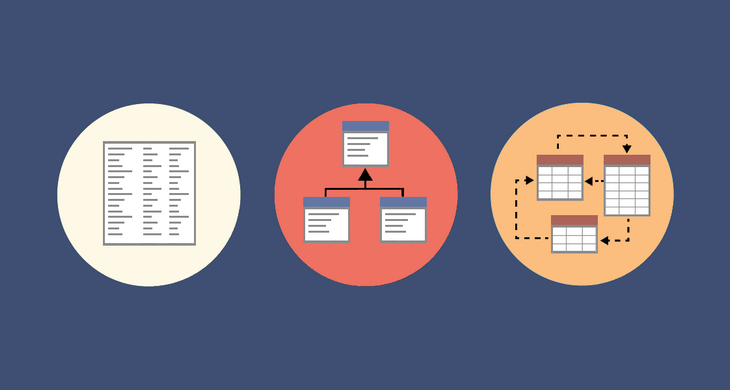Data modeling is a fundamental step in the process of designing and structuring a database or information system. It involves creating a conceptual representation of the data to be stored, organized, and managed within a database. Data modeling helps ensure that data is accurate, consistent, and accessible for various applications and business processes.

There are several types of data models, including:
Types Of Data Modeling
1. Conceptual Data Model:
This is a high-level, abstract representation of the entire data structure without going into specific technical details. It focuses on defining the main entities (objects) and their relationships in the system.
2. Logical Data Model:
The logical data model dives deeper into the details of the data structure. It defines the attributes (properties) of each entity and their relationships, but it is still independent of any particular database management system (DBMS) or technology.
3. Physical Data Model
The physical data model is the most detailed and technical representation. It specifies how the data will be implemented in a specific DBMS, including details like table structures, data types, indexes, and constraints.
Data modeling involves several key concepts and techniques:
Entities:
These represent real-world objects or concepts, such as customers, products, or orders. Entities have attributes that describe their characteristics.
Attributes:
Attributes are the properties or characteristics of entities. For example, a "customer" entity might have attributes like "customer ID," "name," and "email address."
Relationships:
Relationships define how entities are connected or associated with each other. Examples include one-to-one, one-to-many, and many-to-many relationships.
Keys:
Keys are used to uniquely identify records within a database. Common types of keys include primary keys (unique identifiers for each record) and foreign keys (used to establish relationships between tables).
Normalization:
This process eliminates data redundancy by organizing data into separate tables and linking them through relationships. It ensures data integrity and reduces the chances of anomalies.
Denormalization:
In some cases, data is deliberately denormalized for performance reasons, especially in read-heavy systems, to reduce the number of joins required to retrieve data.
Data Types:
Different DBMSs support various data types (e.g., integers, strings, dates) that need to be chosen appropriately for each attribute.
Cardinality:
Cardinality describes the number of instances in one entity that are associated with the number of instances in another entity within a relationship (e.g., one-to-one, one-to-many, many-to-many).
Constraints:
Constraints define rules and limitations on data values, ensuring data quality and integrity. Examples include unique constraints and check constraints.
Summary
Data modeling can be performed using various tools and techniques, such as Entity-Relationship Diagrams (ERDs), Unified Modeling Language (UML) diagrams, or database management software. Effective data modeling is critical for designing robust and efficient databases that meet the needs of an organization's information systems and applications. It helps in data organization, retrieval, and maintenance while ensuring data accuracy and consistency.
